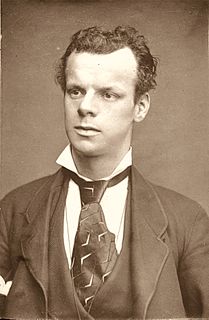
Edward O'Connor Terry was an English actor, who became one of the most influential actors and comedians of the Victorian era.
Mam'zelle Champagne was a musical revue with book by Edgar Allan Woolf, music by Cassius Freeborn, produced by Henry Pincus, which opened June 25, 1906. On opening night at the outdoor Madison Square Garden Roof Theatre, millionaire playboy Harry K. Thaw shot and killed architect Stanford White: the otherwise undistinguished musical's run continued for some 60 performances largely on the publicity from this incident.
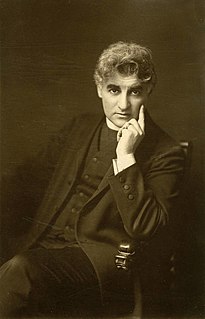
David Belasco was an American theatrical producer, impresario, director and playwright. He was the first writer to adapt the short story Madame Butterfly for the stage, and he launched the theatrical career of many actors, including James O'Neill, Mary Pickford, Lenore Ulric and Barbara Stanwyck. Belasco pioneered many innovative new forms of stage lighting and special effects in order to create realism and naturalism.
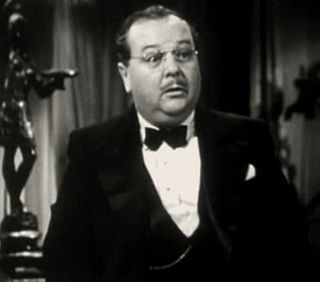
Lloyd Corrigan was an American film and television actor, producer, screenwriter, and director who began working in films in the 1920s. The son of actress Lillian Elliott, Corrigan directed films, usually mysteries such as Daughter of the Dragon starring Anna May Wong, before dedicating himself more to acting in 1938. His short La Cucaracha won an Academy Award in 1935.
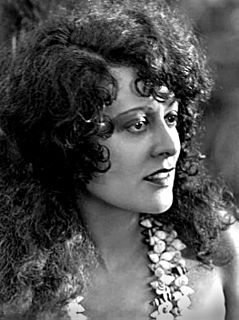
Lenore Ulric was a star of the Broadway stage and Hollywood films of the silent-film and early sound era.
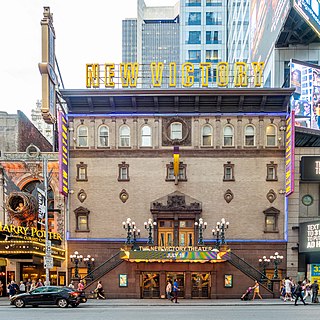
The New Victory Theater is an off-Broadway theater located at 209 West 42nd Street, between 7th and 8th Avenues, in Midtown Manhattan. The New Victory presents work for children and family audiences year-round, programming a full season of theater, dance, puppetry, circus, opera, physical theater and other types of performance art from around the world. In 2012, The New Victory Theater received a special Drama Desk Award for “providing enchanting, sophisticated theater that appeals to the child in all of us, and for nurturing a love of theater in young people.”
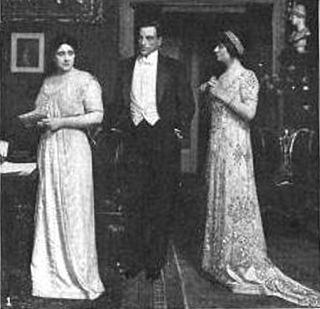
Teresa Maxwell-Conover was an actress in Broadway productions in the early 20th century. She was in motion pictures until the early 1940s. She was from Louisville, Kentucky.

Emma Dunn was an English actress. After starting her acting career on stage in London, she became known for her works in numerous films and Broadway productions.

Stuart Armstrong Walker was an American producer and director in theatre and motion pictures.

Elizabeth Tyree was an actress in Broadway theatrical productions beginning in the mid-1890s. Her married name was Elizabeth Tyree Metcalfe. Professionally she was billed as Bess Tyree.

Gladys Hanson was a stage and silent film actress. Hanson began her career on the Broadway stage in 1907 with the Charles Frohman Company. On the stage she played in the theatrical productions Our American Cousin (1908) with Edward Hugh Sothern, The Builder of Bridge (1909) with later film star Eugene O'Brien and The Governor's Lady (1912) with Emma Dunn and future film leading man Milton Sills.
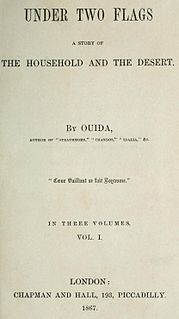
Under Two Flags (1867) was a best-selling novel by Ouida. The most famous of her books, it tells the story of an English aristocrat, apparently in disgrace, who disappears and joins a French battalion in Algeria, loosely based on the Foreign Legion.

Valerie Bergere was a French-born American actress who had a near fifty-year career in theatre and cinema. She began in the chorus of a touring opera company before acting in repertory theatre productions for nearly a decade. Bergere rose to play leading roles, but found her true success in vaudeville where for some seventeen years she remained one of the top draws in variety theatre. Over her later years Bergere also took on character roles in some twenty Broadway and Hollywood productions.
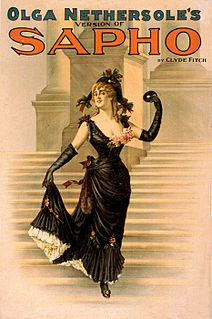
Sapho was a 1900 American play by Clyde Fitch, based on an 1884 French novel of the same name by Alphonse Daudet and an 1885 play by Daudet and Adolphe Belot. It was at the center of a sensational New York City indecency trial involving the play's star and producer/director, Olga Nethersole. The play was not an exceptional success but the incident is considered a notable step in the transformation of American society's attitudes regarding gender roles and public depictions of sex in the 20th century.
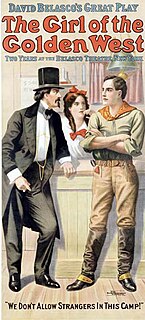
The Girl of the Golden West is a theatrical play written, produced and directed by David Belasco, set in the California Gold Rush. The four-act melodrama opened at the old Belasco Theatre in New York on November 14, 1905 and ran for 224 performances. Blanche Bates originated the role of The Girl, Robert C. Hilliard played Dick Johnson, and Frank Keenan played Jack Rance. Bates was joined by Charles Millward and Cuyler Hastings for two-week Broadway runs in 1907 and 1908. William Furst composed the play's incidental music. The play toured throughout the US for several years.
The Garden Theatre was a major theatre on Madison Avenue and 27th Street in New York City, New York. The theatre opened on September 27, 1890, and closed in 1925. Part of the second Madison Square Garden complex, the theatre presented Broadway plays for two decades and then, as high-end theatres moved uptown to the Times Square area, became a facility for German and Yiddish theatre, motion pictures, lectures, and meetings of trade and political groups.
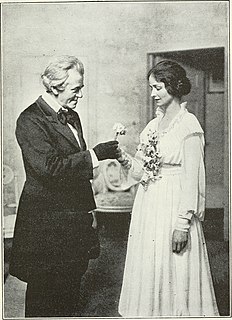
The Music Master was a theatrical play written by Charles Klein, and produced and directed by David Belasco. The three-act comedy-drama opened at the Belasco Theatre in New York on September 26, 1904. It ran for 124 performances before it was moved to the Bijou Theatre where it ran for another 511 performances over that and the next two seasons, before going on tour. David Warfield originated the title role, Anton Von Barwig, and continued playing it in revivals and on tour for two decades. William Furst composed the play's incidental music.

The Lyceum Theatre was a theatre in New York City located on Fourth Avenue, now Park Avenue South, between 23rd and 24th Streets in Manhattan. It was built in 1885 and operated until 1902, when it was torn down to make way for the Metropolitan Life Insurance Company Tower. It was replaced by a new Lyceum Theatre on 45th Street. For most of its existence, the theatre was home to Daniel Frohman’s Lyceum Theatre Stock Company, which presented many important plays and actors of the day.
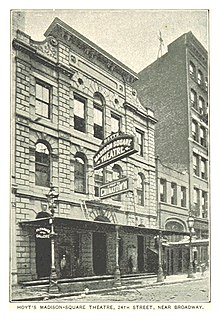
The Madison Square Theatre was a Broadway theatre in Manhattan, on the south side of 24th Street between Sixth Avenue and Broadway It was built in 1863, operated as a theater from 1865 to 1908, and demolished in 1908 to make way for an office building. The Madison Square Theatre was the scene of important developments in stage technology, theatre design, and theatrical tour management. For about half its history it had other names including the Fifth Avenue Theatre, Daly’s Fifth Avenue Theatre, Hoyt’s Madison Square Theatre, and Hoyt’s Theatre.

Sydney Rosenfeld (1855–1931) was an American playwright who wrote numerous plays, and adapted many foreign plays. Close to fifty of his creations played on Broadway.


















